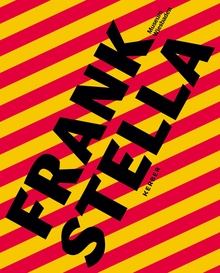| |||||||||||||||||||||||||
ARTIST MONOGRAPHS
|
|
STATUS: Out of print | 00/00/00 For assistance locating a copy, please see our list of recommended out of print specialists |
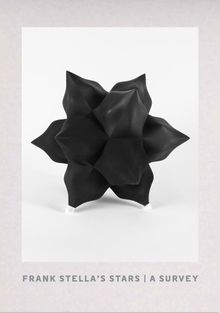 Frank Stella's Stars: A Survey
Frank Stella's Stars: A Survey
Published by Gregory R. Miller & Co./ALDRICH CONTEMPORARY ART MUSEUM.
Introduction by Cybele Maylone. Text by Richard Klein, Amy Smith-Stewart.
As a painter, sculptor and printmaker, Frank Stella (born 1936) has always paid great attention to geometric lines and patterns in his work, creating pieces that are arrestingly kaleidoscopic in both their form and content with bold lines and shaped canvases. This catalog, published for his 2020 exhibition at the Aldrich Contemporary Art Museum in Ridgefield, Connecticut, focuses in particular on the enduring use of star shapes in Stella’s oeuvre.
Stella’s depictions of stars range from the minimalism of his early career, with lithograph prints of brightly colored polygonal patterns, to the maximalism of his more recent work seen in his towering angular sculptures made from stainless steel. Although he is well aware that his last name is the Latin word for star, Stella maintains that his fixation on the shape is inspired by its form and the endless possibilities that accompany the star, rather than its etymology. Both instantly recognizable and infinitely abstract, stars seem like an obvious choice for an artist who has dedicated his life to experimenting with form.
In addition to a plates section of the 60 pieces included in the Aldrich show, this book presents installation shots throughout the museum’s interiors and outdoor gardens, and photographs of the artist’s studio. The curators of the exhibition, Richard Klein and Amy Smith-Stewart, worked closely with Stella on the exhibition installation and contribute major essays that add new dimensions to our understanding of a widely celebrated and influential artist.
PUBLISHER
Gregory R. Miller & Co./ALDRICH CONTEMPORARY ART MUSEUM
BOOK FORMAT
Hardcover, 6.75 x 9.5 in. / 200 pgs / 95 color.
PUBLISHING STATUS
Pub Date 4/13/2021
Active
DISTRIBUTION
D.A.P. Exclusive
Catalog: SPRING 2021 p. 103
PRODUCT DETAILS
ISBN 9781941366295 TRADE
List Price: $50.00 CAD $70.00 GBP £44.00
AVAILABILITY
In stock
in stock $50.00 Free Shipping UPS GROUND IN THE CONTINENTAL U.S. |
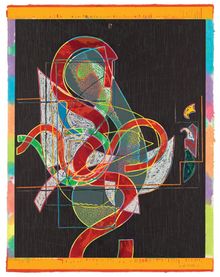 Frank Stella: Prints
Frank Stella: Prints
A Catalogue Raisonné
Published by Jordan Schnitzer Family Foundation.
By Richard H. Axsom. Edited by Carolyn Vaughn, Sigrid Asmus, Laura L. Morris. Foreword by Jordan D. Schnitzer. Text by Leah Kolb.
Frank Stella: Prints registers in chronological sequence more than 300 editioned prints, reproduced in full color, including works in series and portfolios. Related works in other mediums--paintings, metal reliefs, maquettes and sculpture--are also illustrated for comparison. Complete documentation of each print offers a privileged insight into the creative process behind these works of art. An introductory essay, prefaces to each series and comments on individual prints provide background information, analysis and interpretation. Frank Stella: Prints also features an illustrated chronology, a glossary tailored to Stella’s practice, a bibliography and an index.
Soon after arriving in New York in the late 1950s, Frank Stella (born 1936) came to prominence with his striped Black Paintings and shaped canvases. His early painting project reduced the medium to its most fundamental elements and introduced a key concept of Minimalism at an early date: “What you see is what you see.” But it was not long before Stella, a restlessly experimental worker, abandoned austerity for brighter colors, irregular shapes, rougher textures and gestural brushstrokes.
PUBLISHER
Jordan Schnitzer Family Foundation
BOOK FORMAT
Hardcover, 10.25 x 12.25 in. / 432 pgs / 375 color / 30 bw.
PUBLISHING STATUS
Pub Date 4/26/2016
Active
DISTRIBUTION
D.A.P. Exclusive
Catalog: FALL 2016 p. 90
PRODUCT DETAILS
ISBN 9780692587072 TRADE
List Price: $75.00 CAD $99.00 GBP £65.00
AVAILABILITY
In stock
in stock $75.00 Free Shipping UPS GROUND IN THE CONTINENTAL U.S. |
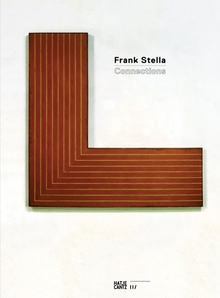 Frank Stella: Connections
Frank Stella: Connections
Published by Hatje Cantz.
Edited by Ben Tufnell. Text by Robert Hobbs, Tom Hunt, Karen Wilken, et al.
PUBLISHER
Hatje Cantz
BOOK FORMAT
Hardcover, 9.75 x 13 in. / 96 pgs / 58 color.
PUBLISHING STATUS
Pub Date 1/31/2012
Out of print
DISTRIBUTION
D.A.P. Exclusive
Catalog: SPRING 2012 p. 91
PRODUCT DETAILS
ISBN 9783775732710 TRADE
List Price: $55.00 CAD $65.00
AVAILABILITY
Not available
STATUS: Out of print | 00/00/00 For assistance locating a copy, please see our list of recommended out of print specialists |
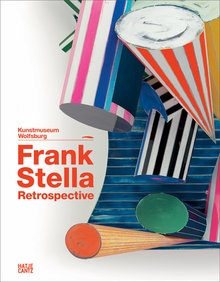 Frank Stella
Frank Stella
Published by Hatje Cantz.
Text by Holger Bröker, Markus Brüderlin, Gregor Stemmrich, et al.
On the occasion of Stella’s comprehensive retrospective at the Kunstmuseum Wolfsburg, this massive survey celebrates the many lives of Frank Stella. It includes classic examples of each of his many periods, such as the Black Paintings, Irregular Polygons, the Protractor paintings, the Circuits series, the metal reliefs and floor sculptures of the past two decades and an “ArchiSkulptur” conceived by the artist exclusively for the exhibition. With more than 660 color reproductions, this volume is as ambitious and spectacular as its subject.
Frank Stella was born in 1936, to first-generation Sicilians, and grew up in a suburb of Boston. In 1954 he entered Princeton University, where he took a night class in painting and drawing. His first solo exhibition was at the Leo Castelli Gallery in 1960.
PUBLISHER
Hatje Cantz
BOOK FORMAT
Hardcover, 9.5 x 12.25 in. / 311 pgs / 662 color.
PUBLISHING STATUS
Pub Date 12/31/2012
Out of print
DISTRIBUTION
D.A.P. Exclusive
Catalog: FALL 2012 p. 14
PRODUCT DETAILS
ISBN 9783775734073 TRADE
List Price: $75.00 CAD $90.00
AVAILABILITY
Not available
STATUS: Out of print | 00/00/00 For assistance locating a copy, please see our list of recommended out of print specialists |
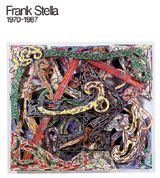 Frank Stella: 1970-1987
Frank Stella: 1970-1987
Published by The Museum of Modern Art, New York.
Artwork by Frank Stella. Edited by William Rubin.
PUBLISHER
The Museum of Modern Art, New York
BOOK FORMAT
Paperback, 9 x 10 in. / 172 pgs / 74 color / 55 bw
PUBLISHING STATUS
Pub Date 9/2/2002
Out of print
DISTRIBUTION
D.A.P. Exclusive
Catalog: FALL 2002
PRODUCT DETAILS
ISBN 9780870705991 TRADE
List Price: $22.50 CAD $25.00
AVAILABILITY
Not available
STATUS: Out of print | 6/1/2005 For assistance locating a copy, please see our list of recommended out of print specialists |
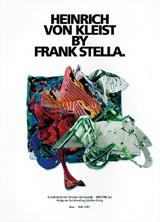 Heinrich Von Kleist By Frank Stella
Heinrich Von Kleist By Frank Stella
Published by Walther König, Köln.
Essays by Franz-Joachim Verspohl, Martin Warnke, Wolfram Hogrebe, Robert K. Wallace.
PUBLISHER
Walther König, Köln
BOOK FORMAT
Paperback, 8.25 x 11.75 in. / 310 pgs / 86 color / 18 bw
PUBLISHING STATUS
Pub Date 2/2/2002
No longer our product
DISTRIBUTION
D.A.P. Exclusive
Catalog: SPRING 2002
PRODUCT DETAILS
ISBN 9783883754888 SDNR30
List Price: $45.00 CAD $55.00
AVAILABILITY
